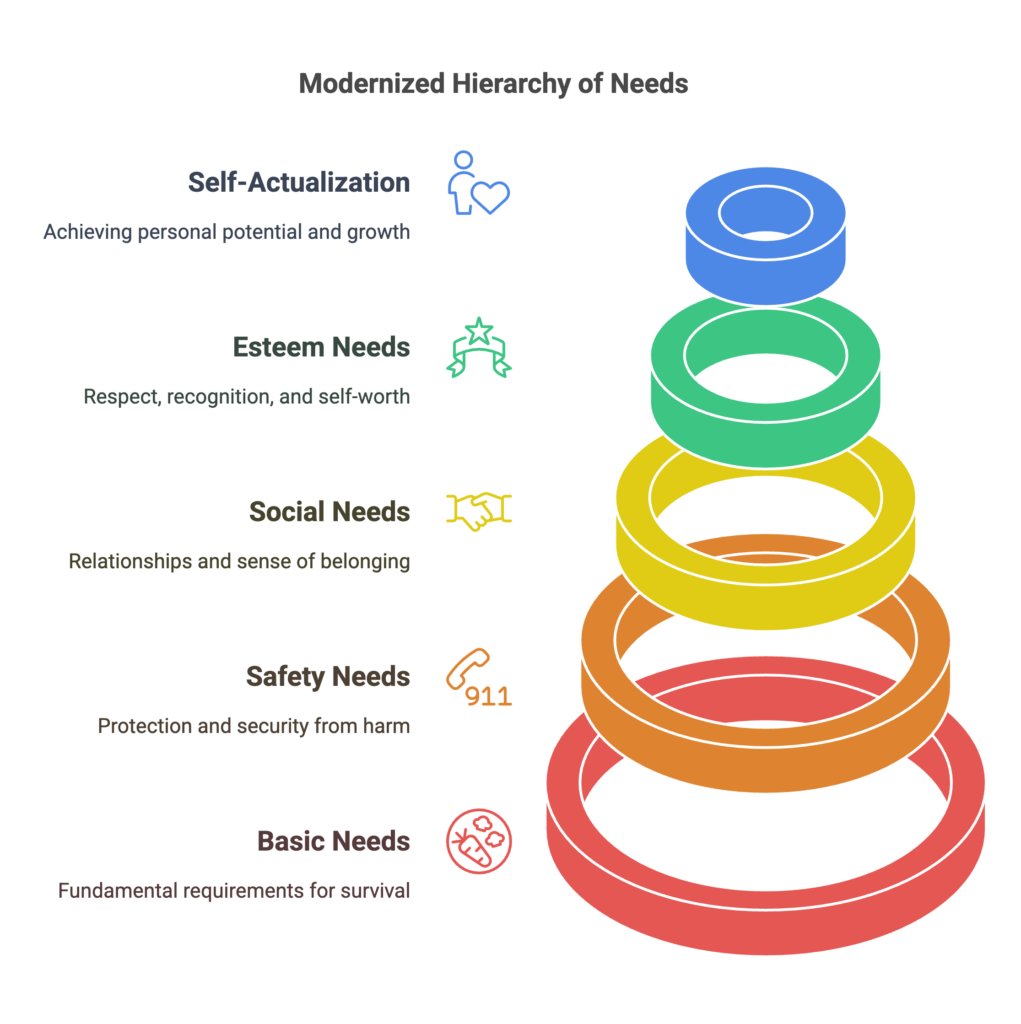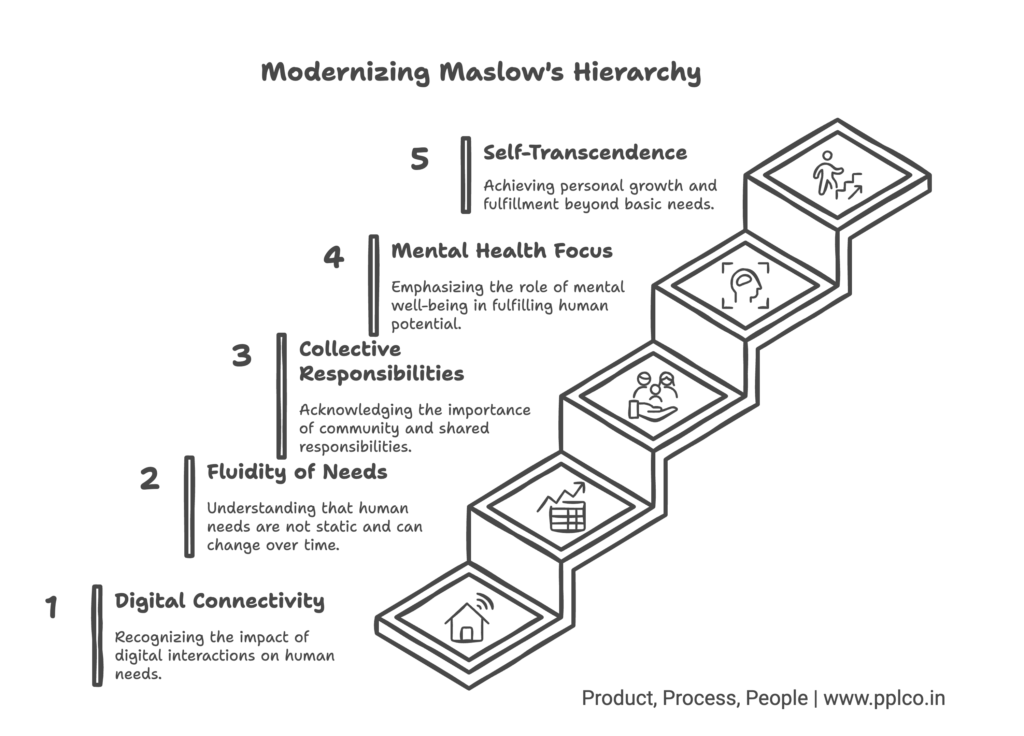A modern perspective.
Maslow’s Hierarchy of Needs, introduced in 1943, has long been a foundational theory in psychology and human motivation. This document seeks to refine and update Maslow’s original model to better align with contemporary understandings of human behavior, societal changes, and the complexities of modern life. By integrating insights from psychology, sociology, and neuroscience, we aim to present a more nuanced view of human needs that reflects the interconnectedness of various aspects of life today.
Introduction to Maslow’s Hierarchy
Maslow’s original hierarchy is often depicted as a pyramid with five levels:
- Physiological Needs – Basic survival needs such as food, water, and shelter.
- Safety Needs – Security, stability, and freedom from fear.
- Love and Belongingness Needs – Social relationships, affection, and community.
- Esteem Needs – Self-esteem, recognition, and respect from others.
- Self-Actualization – The realization of personal potential and self-fulfillment.

While this model has provided a useful framework for understanding human motivation, it is essential to consider how modern societal dynamics, technological advancements, and cultural shifts influence these needs.
Refinements to the Hierarchy
1. Integration of Digital Needs
In the digital age, the need for connectivity and digital presence has emerged as a new layer of necessity. We can view it as an extension of love and belongingness, where social media and online communities play a critical role in forming relationships and identity. Thus, we propose a new layer that emphasizes the importance of digital connection and online identity.
2. Fluidity of Needs
Modern life often presents a non-linear approach to needs fulfillment. Individuals may oscillate between different levels of the hierarchy based on circumstances, such as economic instability or personal crises. Recognizing this fluidity allows for a more dynamic understanding of human motivation, where needs are not strictly hierarchical but rather interdependent.
3. Collective Needs
In today’s interconnected world, collective needs have gained prominence. Issues such as climate change, social justice, and community well-being highlight the importance of belonging to a larger cause. This suggests that love and belongingness can extend beyond personal relationships to include a sense of responsibility and connection to the global community.
4. Mental Health and Well-Being
The growing awareness of mental health has underscored the importance of psychological safety and emotional well-being. It is a prerequisite for higher-level needs, emphasizing that mental health support is crucial for individuals to pursue esteem and self-actualization.
5. Self-Transcendence
Building on Maslow’s concept of self-actualization, we introduce self-transcendence as a higher level of need. This involves seeking meaning and purpose beyond oneself, often through altruism, spirituality, or contributing to the greater good. A shift towards a more holistic understanding of fulfillment that encompasses both personal and collective dimensions.
A fresh perspective…

Refining Maslow’s Hierarchy of Needs through a modern lens allows us to appreciate the complexities of human motivation in today’s world. By acknowledging the influence of digital connectivity, the fluidity of needs, collective responsibilities, mental health, and self-transcendence, we can create a more comprehensive framework that resonates with contemporary experiences.
This updated model not only honors Maslow’s original insights but also adapts them to better serve individuals navigating the challenges and opportunities of modern life.






